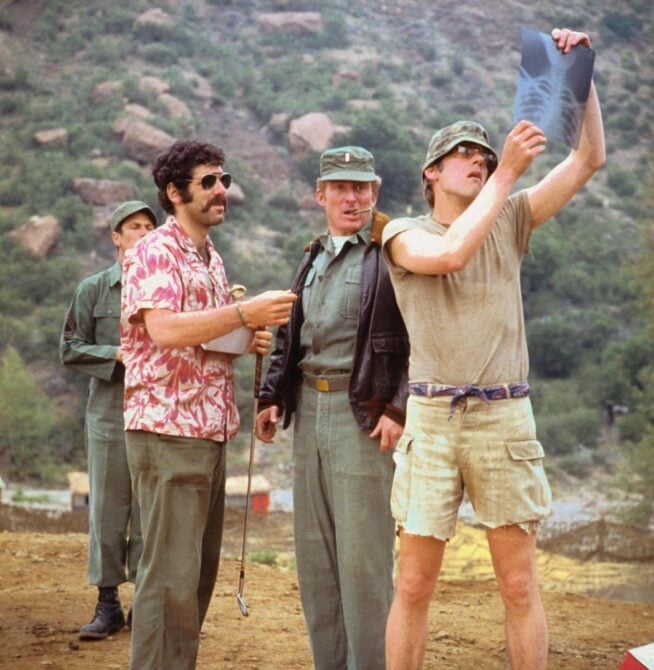
www.theblaze.com
Does Alexa want you to vote for Kamala Harris?
Like many Americans, I own an Echo Show, the Amazon Alexa device with a screen. For the most part, it’s a billboard mounted in your home full of product placement and personalized ads. But it also has a ton of useful features: live view for security cameras, Spotify access, announcement mode, video calls, shopping lists, and over 100,000 “skills” — the Alexa word for apps. My family uses it mostly for timers, reminders, and lists, but the touch screen also allows for a steady flow of recipes and, until recently, a proportional flow of news stories. Predictably, Alexa draws from overwhelmingly liberal news sources: CNN, Al Jazeera, NPR, the Associated Press, CNBC, MSNBC, Bloomberg, CBS News, ABC News, USA Today, the Economist, Newsy, Reuters, and the Washington Post.This increase in news stories coincided with Kamala Harris’ dubious ascent to the Democratic presidential candidacy. The articles also seemed excessively fond of Harris. So I surveyed a dozen Alexa Show-owning friends and family who hold a variety of political orientations, and all of them confirmed that news stories favoring Kamala and disparaging Donald Trump had exploded since Vice President Harris was appointed by the Democrats to be the presidential nominee. Alexa’s left-wing bent makes sense, considering that Jeff Bezos has owned the Washington Post since 2013. (The Post occasionally publishes articles that seem to disprove the claims I’m making here.)We already know that Alexa is a feminist BLM supporter. There’s even an Alexa skill that reports Kamala’s latest tweets. ChatGPT has also been shown to lean left. However, the New York Times, which has accused both Siri and Alexa of “reinforcing gender bias” because they “by default have female names, female voices and often a submissive or even flirtatious style,” still doesn’t think Alex is progressive enough.The Alexa News function claims to offer “top headlines from trusted sources.” But as most people know, “trusted source” is usually media talk for “extremely biased.”Predictably, Alexa draws from overwhelmingly liberal news sources: CNN, Al Jazeera, NPR, the Associated Press, CNBC, MSNBC, Bloomberg, CBS News, ABC News, USA Today, the Economist, Newsy, Reuters, and the Washington Post. If you’re looking for culture news, Alexa offers articles and clips from People, The Daily Show, The Tonight Show with Jimmy Fallon, and Jimmy Kimmel Live. To left-leaning audiences, conservatives frame media bias as a pervasive or intentional conspiracy. They admit that it happens but that it’s nowhere near as widespread as Fox News would have you believe. They insist that there is mostly the perception of bias and that it isn’t harmful. For liberals, conservatives are just feeling their own hostility. Journalism is a creative profession, and most creatives tend to lean left. However, they argue that the high concentration of liberal journalists doesn’t make journalism inherently left-leaning. Some mainstream outlets, like NPR, take it a step farther and claim that they are part of an unbiased journalistic institution. The only options outside of liberal media are the Wall Street Journal and Fox News, which is roughly in line with the limited and often questionable rankings of digital news outlets. As of July 1, 2024, SimilarWeb ranked the top news websites in the United States, in order, as Yahoo News, CNN.com, nytimes.com, and foxnews.com.The Blaze isn’t available, neither are the New York Post, Daily Wire, Townhall, Red State, or the Daily Caller.This is important given the fact that an overwhelming majority (86%) of Americans get their news from a smart device of some kind. And this number has skyrocketed in the last two years alone. The Pew report also found that the percentage of Republicans and Democrats who get their news from digital devices is nearly identical. In a perfect world, Alexa’s available news sources would reflect this. So I tried one more option. The news channel claims to allow you to “customize your new channel and flash briefings on Alexa.” You can choose from three options: FoxNews, CNN, and NPR.You have to go out of your way to set this up. Of the dozen friends and family I surveyed, none had customized the news.So I went through the process and selected FoxNews as my preferred news source. However, I haven’t noticed the slightest change in the content I receive. In fact, I’ve yet to encounter a single article or video from Fox News. And this doesn’t explain the overall uptick in news stories being shown or the outrageousness of their bias. But the stakes are high. As researcher Maxwell McCombs noted, “Controlling the perspective of the political debate on any issue is the ultimate influence on public opinion.” And public opinion leads to action. And, in political hands, action leads to power. So I figured I’d go directly to the source: “Alexa, do you like Kamala Harris?”To which she replied, “Well, quite frankly, I don’t think bots should influence politics.”If only that were true.















